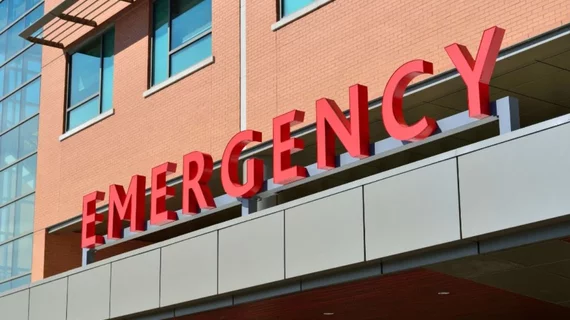AHA: ‘Mini strokes’ need emergency assessment, may require hospitalization
Even when stroke symptoms disappear in under an hour—known as a transient ischemic attack (TIA) or a ‘mini stroke,’ patients with symptoms lasting any amount of time should receive emergency assessment, according to a new scientific statement from the American Heart Association (AHA).
Emergency TIA assessment avoids ‘missed’ strokes and identifies risks
Events that initially present as a TIA may actually be a full-blown stroke, the statement noted: Two in five people who go on to receive an appropriate scan learn that they have actually had a stroke and not a TIA.
Additionally, even when scans determine that an event is indeed “just” a TIA, these events are often precursors to full-blown strokes. Nearly 20% of people who have a suspected TIA go on to experience a full stroke within just three months, and 43% of ischemic stroke patients said that they had experienced a TIA within a week prior to their stroke.
An emergency visit, therefore, can help avoid these “missed” instances of stroke and can also identify when patients are at high-risk for a future, full-blown stroke, offering an opportunity for potential hospitalization or a plan for follow-up.
Treatment guidelines and standardization goals
According to the AHA statement, emergency assessment for TIA should include imaging of the blood vessels in the head and neck. Then, medical professionals should rule out a full-blown stroke, check for relevant conditions through blood work, and perform or provide a plan to perform neurological follow-up.
A course of treatment could look like this:
- Non-Contrast Head CT should be done to rule out intracerebral hemorrhage and TIA mimics.
- CT angiography may also be done to look for any signs of narrowing in the arteries leading to the brain.
- MRI should ideally be done within 24 hours of symptom onset to rule out brain injury—making sure that the TIA was not actually a full-blown stroke. Emergency rooms without access to an MRI scanner may admit the patient to the hospital for MRI or transfer them to a center with rapid access to one, the statement noted.
- Blood work can rule out other potentially confounding conditions, like low blood sugar or infection, that could be responsible for TIA-like symptoms. Blood work can also check for known cardiovascular risk factors such as diabetes and high cholesterol.
If a TIA is diagnosed after the above steps, the statement then advises:
- A cardiac work-up, ideally conducted in the emergency department but potentially coordinated as a follow-up visit (preferably within a week of the TIA), to include screening for atrial fibrillation.
- Early neurology consultation, either during the emergency visit or as a follow-up with a neurologist (ideally within 48 hours but not longer than one week after a TIA).
Since emergency treatment for TIA currently varies from facility to facility, one major impact of the AHA statement is to offer this more uniform guidance for a more consistent approach.
“Someone with a TIA who goes to an emergency room with limited resources may not get the same evaluation that they would at a certified stroke center. This statement was written with those emergency room physicians or internists in mind—professionals in resource-limited areas who may not have immediate access to a vascular neurologist and must make challenging evaluation and treatment decisions,” said Hardik Amin, MD, chair of the scientific statement writing committee and associate professor of neurology and medical stroke director at Yale New Haven Hospital, St. Raphael Campus.
‘Warning stroke’ a more accurate term than ‘mini stroke’
With its potentially dangerous indications and impacts in mind, the AHA advises that instead of thinking of a TIA as a “mini stroke”—which may dangerously downplay its implications—these events can more accurately be described as “warning strokes.”
The proposed adjustment in terminology emphasizes the urgent nature of diagnosis, treatment, and follow-up.
The guidance, published in the organization’s journal Stroke, will affect hundreds of thousands of Americans, with approximately 240,000 people in the U.S. experiencing a TIA each year.
